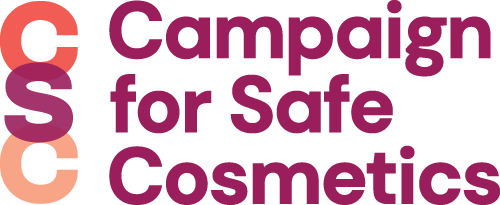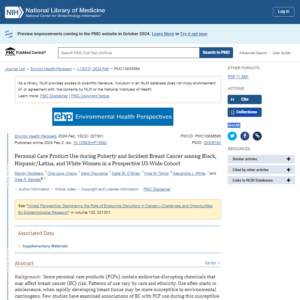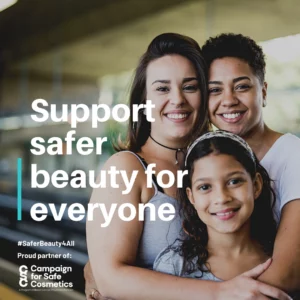Guest Post by Sophia Huda, Toxics Specialist at West Harlem Environmental Action for Environmental Justice (WE ACT) and Lariah Edwards, Associate Research Scientist, Columbia University Mailman School of Public Health
“Beauty is power” is a mantra the beauty industry uses to compel us to buy their products. Along with “look good, feel better,” these affirmations tell us that we can be empowered by the lipstick we use or the way we wear our hair, and they are often tied to concepts of female empowerment. But what is beauty? Is it an ideal we seek? If so, then who shapes and defines that ideal? And what impact does that have on those who seek to embrace and attain it? For some, looking “beautiful” is not empowering and can often be disenfranchising – even unhealthy.
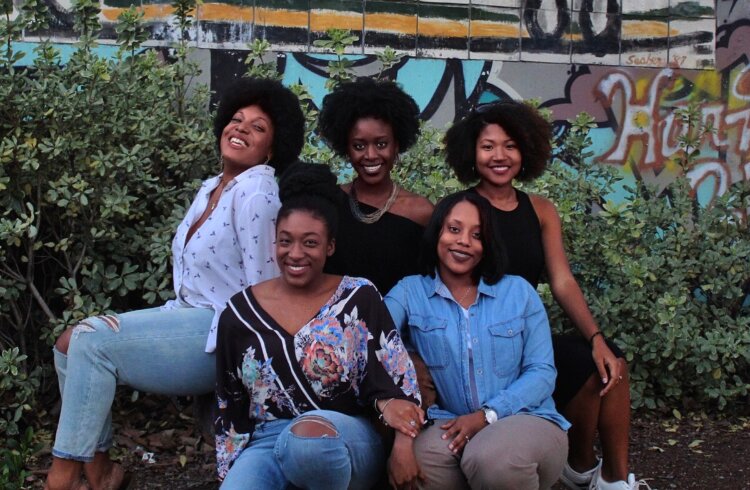
What is beauty?
For many women of color, ‘beautiful’ is defined by Eurocentric standards, in which the skin color and hair texture they were born with do not fit. Fitting this definition of beauty, which many of us have been socialized to believe, means you approach how you do your hair or makeup or care for your skin much differently than others. For many women of color, beauty is less a lighthearted and fun approach to empowerment. Rather, it is more of a stressful and demeaning attempt to fit in and be accepted by society. When beauty standards reinforce racialized ideas about who is beautiful, successful, or worthy of fair treatment, the result is toxic.
Studying beauty norms
A new study led by WE ACT for Environmental Justice and researchers at Columbia Mailman School of Public Health shows that racialized beauty norms motivate the use of skin lighteners and chemical straighteners among individuals surveyed in Northern Manhattan and the South Bronx, communities predominantly inhabited by people of color. Skin lighteners contain toxic chemicals like mercury, which can cause skin rashes and nervous system damage. In addition, chemical straighteners can contain a mixture of harmful chemicals, and their use has been linked to health problems such as uterine fibroid tumors and uterine cancer.
Our new study, recently published in Environmental Justice, comes out of WE ACT’s Beauty Inside Out campaign. WE ACT, a community-based organization, has been working to advance environmental justice in Northern Manhattan since 1988. In 2019, it launched the Beauty Inside Out campaign to educate the community about toxic chemicals in beauty and personal care products, especially those marketed to women of color. The Beauty Inside Out campaign incorporates research, education, policy, and marketplace action to address the underlying issue of environmental injustice in the beauty industry. These include surveys of adults and youth on their use of personal care and beauty products.
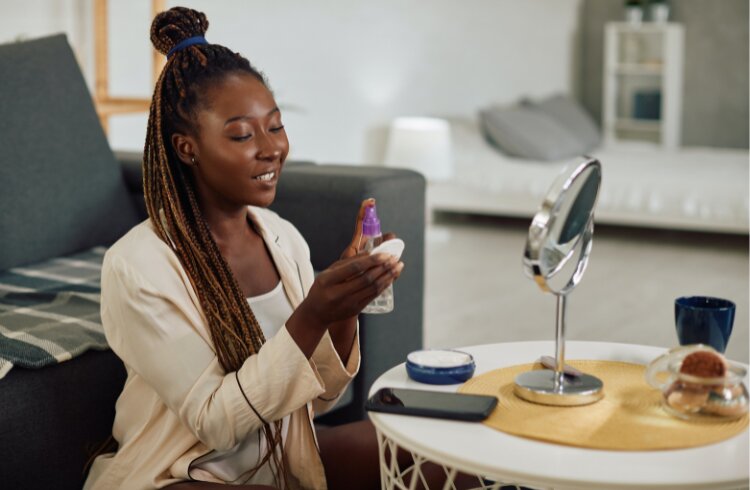
When beauty standards reinforce racialized ideas about who is beautiful, successful, or worthy of fair treatment, the result is toxic.
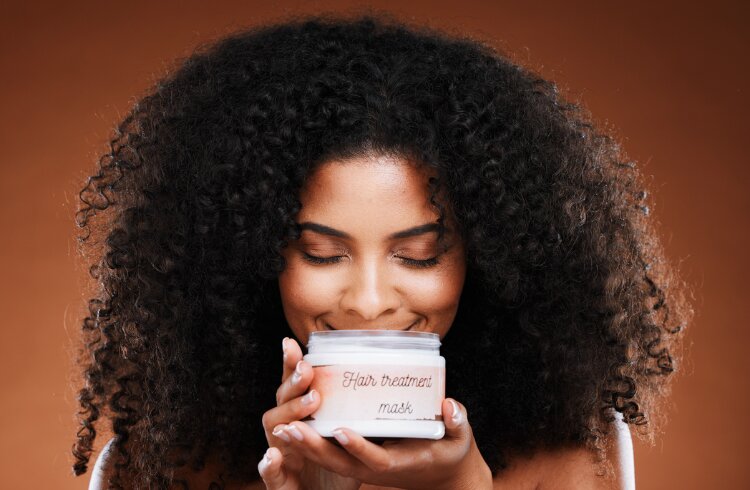
The cumulative impacts of racialized beauty norms
Systems of oppression such as racism and sexism create pressure for women to adhere to Eurocentric beauty standards. Simultaneously, women of color receive heavy marketing for beauty products that often contain toxic chemicals. This marketing strategy is largely successful as Black and Latinx women are amongst the highest consumers of beauty and personal care products in the US. Through their use of these products, such as hair relaxers and skin-lightening creams, women of color are burdened with higher chemical exposures than white women.
Marginalized groups have historically also been burdened by a disproportionate number of pollution-generating facilities sited in their communities, what is referred to as environmental racism or environmental injustice. The cumulative impacts of these multiple sources of pollution exponentially harm their residents, causing health impacts such as asthma, lung, and heart disease, increased birth defects, and learning impairments. Toxic beauty products compound these health impacts and are another form of environmental racism. Whether using or working with them, women of color are exposed and suffer the negative health effects they cause.
Beauty Inside Out
Our study, Beauty Inside Out: Examining Beauty Product Use Among Diverse Women and Femme-Identifying Individuals in Northern Manhattan and South Bronx Through an Environmental Justice Framework, published in January 2023, summarizes the Beauty Inside Out campaign’s survey results from 297 women and femme-identifying adults from Northern Manhattan and the South Bronx.
We used the 95-question survey to understand respondents’ use of and sentiments toward skin lighteners and chemical hair straighteners, two of the most notoriously toxic-ladened personal care products. For example, we asked respondents to indicate if they had ever used these products and if they had used them in the past year. In addition, we asked what respondents personally thought about light skin and straight hair and the benefits they afford women. We also asked what they believe others thought about light skin and straight hair and their benefits.
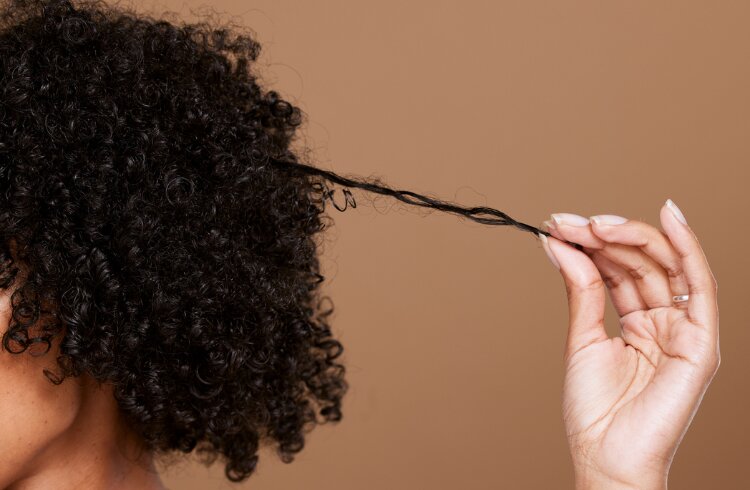
Disappointing (but predictable) study results
Frustratingly, the results were unsurprising. We found that women and femme-identifying individuals of color were frequent users of chemical straighteners and skin lighteners. Among users of both products, beauty was the top reason for use.
While the use of chemical straighteners was highest among Black respondents, our data suggest a decline in their use.
For skin lighteners, use was highest among Asian respondents.
Our results suggest that racialized beauty norms drive the use of both chemical straighteners and skin lighteners.
Half of all respondents said they think others believe straight hair or light skin makes women more beautiful. However, fewer respondents said they personally felt this way.
Approximately one-third of respondents reported that they personally feel straight hair or light skin makes women more beautiful. We found similar findings when we asked respondents about straight hair and, separately, light skin making women look younger, wealthier, or more professional.
Our results suggest that racialized beauty norms drive the use of both chemical straighteners and skin lighteners. Respondents who thought that others believed that straight hair makes women look wealthier or more professional were more likely to use chemical straighteners in their lifetimes than women who did not have these beliefs.
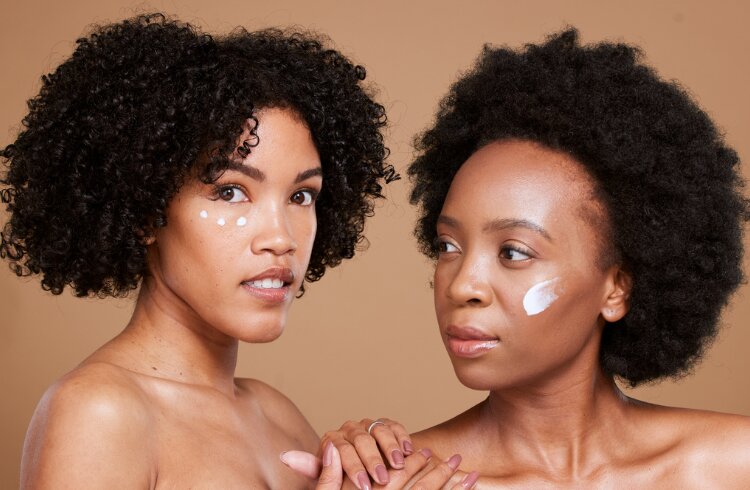
Similarly, respondents who thought that others believed that lighter skin makes women look more beautiful or younger were more likely to currently use skin lighteners than women who did not have these beliefs.
Beauty norms and health risk
These results join a growing body of literature that describes environmental racism in the beauty industry and its worrisome effects primarily on women of color. A recent study by NIEHS found a higher incidence rate of uterine cancer for frequent users of relaxers, a product most commonly used by Black women.
It is not just relaxer product users who are at risk, however. Women of color are the majority of those who work in the beauty industry as hair stylists or nail salon workers. They are exposed to these products more regularly and for longer periods as a result of their occupation.
Another recent study detected several endocrine-disrupting chemicals frequently found in hair dyes and chemical straighteners – including some lesser-known compounds – in Black and Latinx hair stylists.
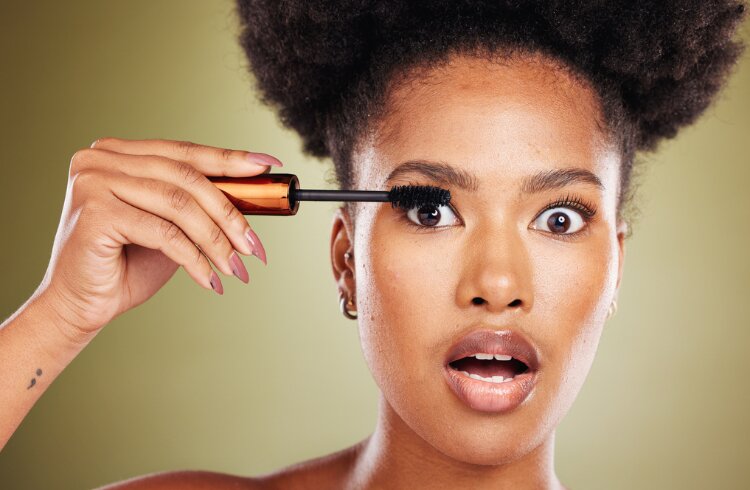
How do we affect change?
So, this begs the question: what can be done? How can we change these attitudes and perceptions? How can we reshape the racialized beauty norms and reduce the use of toxic chemicals in cosmetics?
The Mercury Out of Cosmetics Bill
Increased regulation of toxic chemicals used in beauty and personal care products is an obvious solution to reduce the disproportionate harm to women of color. While the pace is glacial, there have been some positive steps in the right direction. For example, in December 2022, New York State Governor Kathy Hochul signed the Mercury Out of Cosmetics bill. This bill, which WE ACT helped draft, bans the sale of cosmetics and other personal care products that contain mercury, both online and in-stores. This bill is a win for all New Yorkers but especially for WE ACT’s community, where the use and sale of these types of products are still prevalent. It also sends a clear signal to manufacturers of these products, as they will no longer be able to sell them in the nation’s fourth most-populated state.
That said, the bill cannot eliminate the sale or use of homemade or illegally imported skin-lightening creams.
The Modernization of Cosmetics Regulations Act of 2022
In December 2022, President Biden signed the Modernization of Cosmetics Regulations Act of 2022, representing the first significant amendments to the Federal Food, Drug, and Cosmetics Act in 80 years. The new legislation has some notable wins, such as giving the Food and Drug Administration (FDA) the authority to recall harmful cosmetic products and requiring companies to report fragrance and flavor ingredients to the FDA.
However, this legislation still has room for improvement to ensure that women of color are protected. So, how do we challenge the beauty norms that drive the consumption and use of these harmful products? Norms that are built on and upheld by centuries of racism and colonialism?
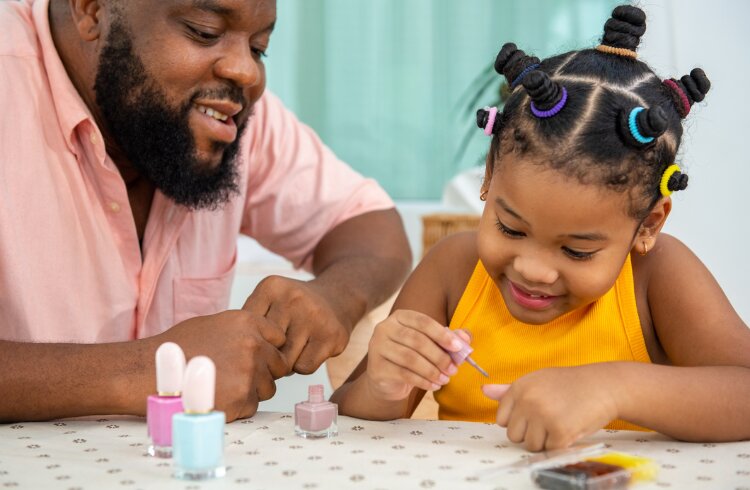
Creating a Respectful and Open World for Natural Hair (CROWN) Act
First, starting conversations on racialized beauty norms and colorism is important. A broader understanding of how these norms create both external and internal pressure to conform to racialized standards of beauty help with the creation and passing of legislation like the Creating a Respectful and Open World for Natural Hair (CROWN) Act.
The CROWN Act, passed in 20 states across the country, has amplified the hair discrimination conversation that disproportionately affects Black girls and women by ensuring protection against discrimination based on race-based hairstyles. It specifically extends protection to hair texture and protective styles such as braids, locs, twists, and knots in the workplace and public schools.
Start the conversation
Legislation can’t address everything, however. The Beauty Inside Out campaign started in part to bring the discussion on racialized beauty standards to our community to help foster change in how people of color approach beauty and their use of beauty products. After all, before we can say that “beauty is power,” we must first recognize that beauty comes from within.
About the authors


References
In order of appearance
“Skin Lightening Products Found to Contain Mercury, Hydroquinone and/or Steroids,” Minnesota Department of Health, Last Updated July 1, 2021, accessed February 22, 2023, https://www.health.state.mn.us/communities/environment/skin/docs/testedprds.pdf.
“Health Effects of Exposures to Mercury,” U.S. Environmental Protection Agency, Last Updated April 14, 2022, accessed February 22, 2023, https://www.epa.gov/mercury/health-effects-exposures-mercury#compounds.
Lauren A. Wise, Julie R. Palmer, David Reich, Yvette C. Cozier, and Lynn Rosenberg, “Hair Relaxer Use and Risk of Uterine Leiomyomata in African-American Women,” American Journal of Epidemiology 175, no. 5. (Mar 2012): 432-440, https://doi.org/10.1093%2Faje%2Fkwr351.
Che-Jung Chang, Katie M. O’Brien, Alexander P. Keil, Symielle A. Gaston, Chandra L. Jackson, Dale P. Sandler, Alexandra J. White, “Use of Straighteners and Other Hair Products and Incident Uterine Cancer,” JNCI: Journal of the National Cancer Institute 114, no. 12 (December 2022): 1636-1645, https://doi.org/10.1093/jnci/djac165.
Lariah Edwards, Lubna Ahmed, Leslie Martinez, Sophia Huda, Bhavna Shamasunder, Jasmine A. McDonald, Robert Dubrow, Beaumont Morton, and Ami R. Zota, “Beauty Inside Out: Examining Beauty Product Use Among Diverse Women and Femme-Identifying Individuals in Northern Manhattan and South Bronx Through an Environmental Justice Framework,” Environmental Justice (January 2023), https://doi.org/10.1089/env.2022.0053.
“Beauty Inside Out,” WE ACT for Environmental Justice, accessed February 22, 2023, https://www.weact.org/campaigns/beauty-inside-out/.
Chris Kirkham and Lisa Girion, “As Worries About Baby Powder’s Safety Mounted, J&J Focused Its Pitches on Minority, Overweight Women,” Reuters, April 9, 2019, https://www.reuters.com/investigates/special-report/johnsonandjohnson-marketing/.
James Manso, “Black, Hispanic Shoppers Driving Beauty Sales According to NielsenIQ,” Women’s Wear Daily, April 16, 2021, https://wwd.com/feature/black-hispanic-shoppers-driving-beauty-sales-according-to-nielseniq-1234800340/.
“Life at the Fenceline Understanding Cumulative Health Hazards in Environmental Justice Communities,” Environmental Justice Health Alliance for Chemical Policy Reform, Coming Clean, Campaign for Healthier Solutions, September 2018, https://ej4all.org/assets/media/documents/Life%20at%20the%20Fenceline%20-%20English%20-%20Public.pdf.
Che-Jung Chang, Katie M. O’Brien, Alexander P. Keil, Symielle A. Gaston, Chandra L. Jackson, Dale P. Sandler, Alexandra J. White, “Use of Straighteners and Other Hair Products and Incident Uterine Cancer,” JCNI: Journal of the National Cancer Institute 114, no. 12 (December 2022): 1636-1645, https://doi.org/10.1093/jnci/djac165.
“Nail Files A Study of Nail Salon Workers and Industry in the United States,” UCLA Labor Center, California Health Nail Salon Collaborative, November 2018, https://www.labor.ucla.edu/wp-content/uploads/2018/11/NAILFILES_FINAL.pdf.
Matthew N. Newmeyer, Lesliam Quirós-Alcalá, Lucy K. Kavi, Lydia M. Louis, and Carsten Prasse, “Implementing a suspect screening method to assess occupational chemical exposures among US-based hairdressers serving an ethnically diverse clientele: a pilot study,” Journal of Exposure Science and Environmental Epidemiology (January 2023), https://doi.org/10.1038/s41370-023-00519-z.
“Governor Hochul Bans Sale of Personal Care Products Containing Mercury” WE ACT for Environmental Justice, accessed February 22, 2023, https://www.weact.org/2022/12/governor-hochul-bans-sale-of-personal-care-products-containing-mercury/.
Wendy McKelvey, Nancy Jeffery, Nancy Clark, Daniel Kass, and Patrick J. Parsons, “Population-Based Inorganic Mercury Biomonitoring and the Identification of Skin Care Products as a Source of Exposure in New York City,” Environmental Health Perspectives 119, no, 2 (February 2011): 203–209, https://doi.org/10.1289%2Fehp.1002396.
“Big Federal Cosmetic Policy Reform Enacted” Breast Cancer Prevention Partners, accessed March 3, 2023, https://www.bcpp.org/resource/cosmetic-policy-reform-enacted/.
“H.R.2116 – Creating a Respectful and Open World for Natural Hair Act of 2022,” 117th Congress, accessed February 22, 2023, https://www.congress.gov/bill/117th-congress/house-bill/2116/text.
“Colorism: How the Manufacture & Marketing of Cosmetics is Poisoning People of Color” YouTube, January 27, 2023, https://www.youtube.com/watch?v=oQOkq0s3YZM.
